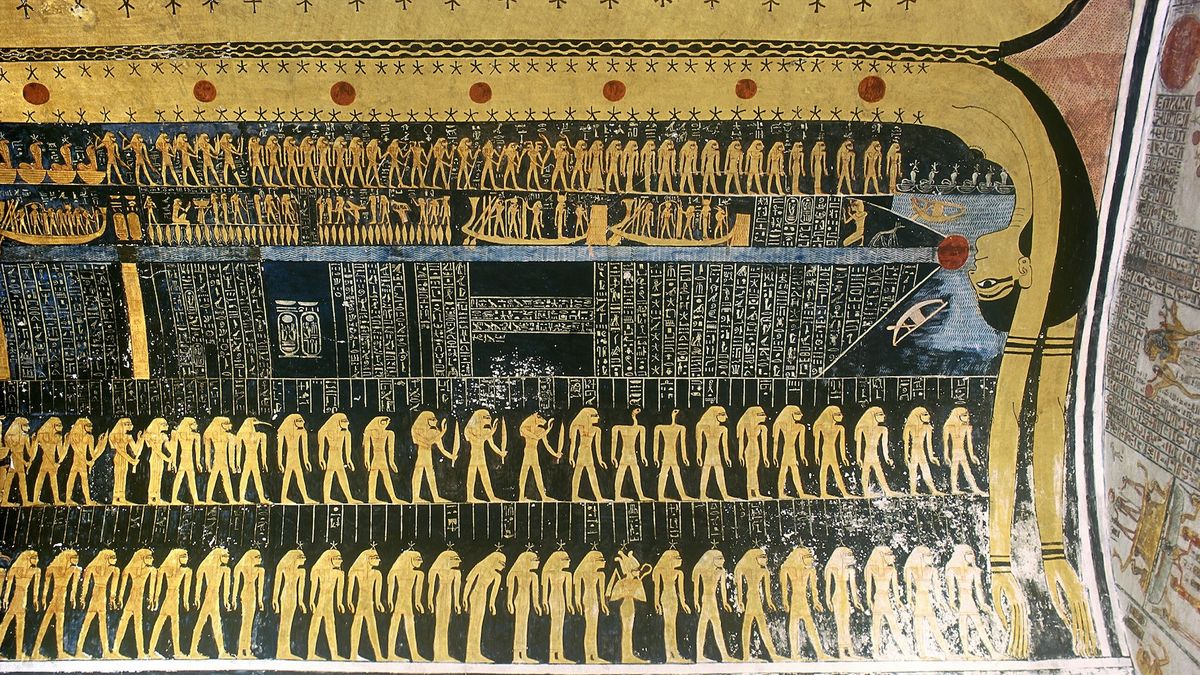Now Reading: Study Reveals Ancient Egyptians Linked Milky Way to Sky Goddess in Tomb Art
-
01
Study Reveals Ancient Egyptians Linked Milky Way to Sky Goddess in Tomb Art
Study Reveals Ancient Egyptians Linked Milky Way to Sky Goddess in Tomb Art

Swift Summary:
- Starry paintings on ancient Egyptian coffins and tombs depict the goddess Nut intertwined with celestial representations, suggesting a connection with the Milky Way galaxy.
- Or Graur, an astrophysics professor from the University of Portsmouth, analyzed 125 depictions of Nut across artifacts up to 5,000 years old. Detailed paintings indicated celestial features like “undulating curves” symbolizing the Great Rift in the Milky Way.
- One exmaple includes Nut’s depiction on a chantress’s coffin named Nesitaudjatakhet-her star-covered body is bisected by black curves resembling dust bands in the Milky Way.
- Ceiling decorations from Ramesses VI’s tomb emphasize similar imagery of Nut connected with wavelike patterns thought to signify cosmic phenomena.
- Egyptologists have previously hypothesized this connection; Graur’s astronomical analysis corroborates these interpretations scientifically.
- Rogério Sousa, an Egyptology scholar, agrees with Graur’s findings and highlights their value due to their astronomical perspective.
!Imagery on the tomb of ramesses VI depicts goddess Nut
Indian Opinion Analysis:
The study revealing ancient Egyptian associations between religious symbolism and observable astronomical phenomena highlights how early civilizations combined spirituality with scientific observation. While engaging for global historical knowledge, such interdisciplinary insights also carry implications for India’s own rich cultural heritage that blends astronomy and mythology-for instance, references to constellations in Vedic texts or temple alignments based on celestial movements. Exploring these parallels could inspire further studies into India’s traditions while fostering deeper engagement between modern science and historical narratives globally.Read more


























